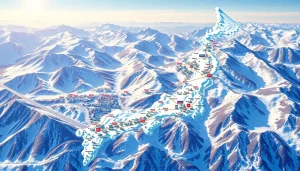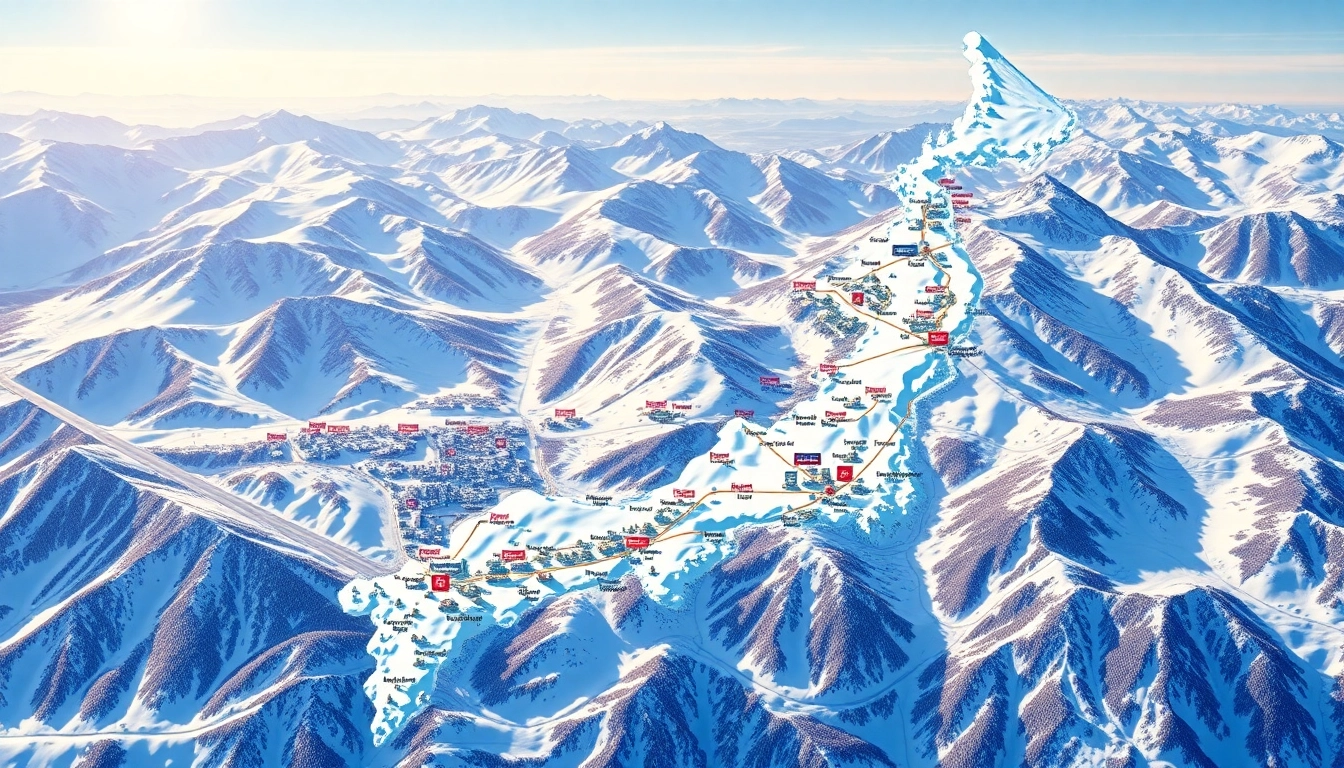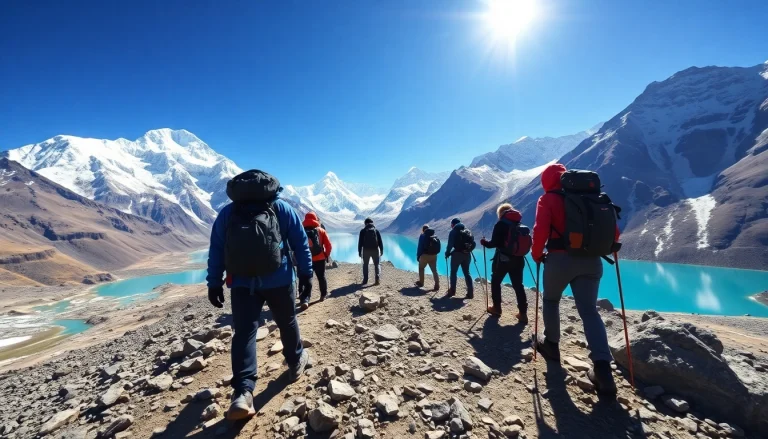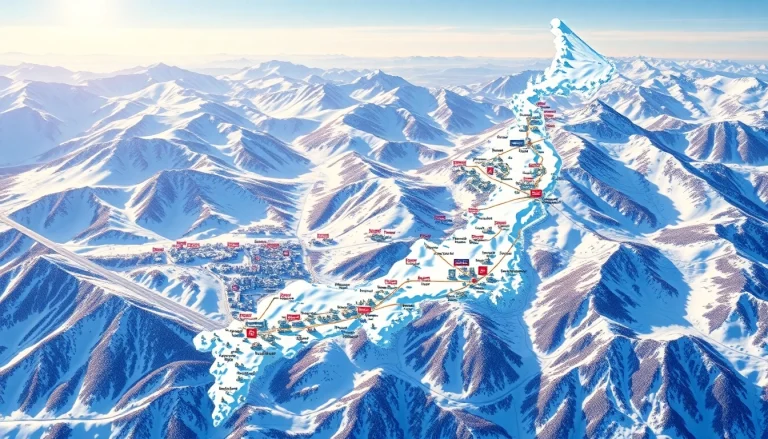Understanding the Ski Map of Japan
Japan, renowned for its pristine powder snow and breathtaking landscapes, has become a premier destination for skiing enthusiasts from around the world. To navigate this expansive area with confidence, a ski map of japan is indispensable. This guide not only provides a visual overview of various ski resorts, but also includes essential information about the ski trails, facilities, and regions featured within the country.
Key Features and Elements
A typical ski map of Japan encompasses various crucial elements designed to assist skiers and snowboarders at all levels:
- Ski Areas: These are marked in distinct colors or patterns, indicating the areas available for skiing, snowboarding, and associated activities.
- Trail Maps: Each ski area features its own trail map, showcasing the runs categorized by difficulty level, from beginner to expert. This is vital for planning your day on the slopes.
- Lifts: The map identifies ski lifts and gondolas that grant access to different elevations and regions. Knowing where each lift is located can significantly enhance your skiing experience.
- Facilities: Essential services such as rentals, ski schools, restaurants, and restrooms are highlighted, ensuring you can find everything you need for a comfortable skiing experience.
- Topography: Non-skiing features including elevation changes and natural obstacles help in recognizing features that can be leveraged for skiing techniques or in case of emergencies.
Regions Covered by the Ski Map of Japan
Japan’s ski resorts are primarily concentrated in three main regions: Hokkaido, Honshu (featuring Nagano), and the northeastern part of the country. Each area presents unique attractions and advantages:
- Hokkaido: Famous for its light, fluffy powder snow, Hokkaido is home to notable resorts such as Niseko, Furano, and Rusutsu. Skiers flock here for the exceptional snowfall and vibrant après-ski culture.
- Nagano: Host of the 1998 Winter Olympics, this region boasts numerous ski resorts like Hakuba Valley, Shiga Kogen, and Nozawa Onsen, offering a wide range of slopes to suit all skill levels.
- Northeast Japan: Ski resorts such as Zao Onsen and Appi Kogen provide thrilling options with fewer tourists, making them excellent choices for those seeking less crowded runs.
Benefits of Using a Ski Map
The advantages of utilizing a ski map of Japan extend beyond mere navigation:
- Enhances Safety: By understanding the layout of ski trails, skiers can avoid unsafe areas and stay on designated paths.
- Efficient Planning: A ski map allows for strategic planning of your ski day, optimizing the use of time and maximizing enjoyment.
- Helps in Identifying Skills विकास: Skiers can select trails that match or challenge their skill level, contributing to their progress in the sport.
- Facilitates Social Engagement: Group ski trips benefit from collective reference to a single map, thereby ensuring that everyone is on the same page.
Top Ski Resorts Highlighted on the Ski Map of Japan
Japan boasts a plethora of ski resorts catering to different preferences and skill levels. Here are some of the standout resorts found on a ski map of Japan:
Hokkaido’s Notable Ski Areas
Hokkaido stands out for its premium powder snow, extensive terrain, and vibrant local culture. Key resorts include:
- Niseko: Arguably one of the most famous ski resorts globally, known for its deep powder and diverse terrain. The picturesque night skiing and vibrant nightlife attract many international visitors.
- Furano: Nestled between two mountains, Furano is famed for both its ski runs and beautiful scenery. It has fewer crowds and offers a more tranquil skiing experience.
- Rusutsu: Known for its vast terrain and excellent snow quality, Rusutsu combines a ski resort experience with family-friendly activities.
Resorts in Nagano’s Ski Region
Nagano is recognized for its dual offerings of exciting skiing and cultural diversity:
- Hakuba Valley: A key destination for ski enthusiasts, it features multiple resorts and a variety of slopes catering to all levels. Its breathtaking views and ample snowfall make it a must-visit.
- Shiga Kogen: One of the largest ski areas in Japan, it boasts numerous interconnected resorts and is perfect for those looking to ski all day without repeating the same trail.
- Nozawa Onsen: Renowned for its traditional onsen (hot springs), after a long day on the slopes, visitors can rejuvenate in its numerous hot springs.
Northeast Japan Ski Destinations
This less-traveled region offers unique experiences away from the mainstream crowds:
- Zao Onsen: Famous for its snow monsters, a phenomenon created when trees become covered in frost. Zao offers thrilling skiing and natural hot springs.
- Appi Kogen: Known for its reliable snowfall, Appi Kogen has expansive runs that satisfy intermediate and advanced skiers looking for adventure.
How to Read the Ski Map of Japan Effectively
Reading a ski map effectively is crucial for maximizing your skiing experience. Here’s how to interpret what you see on the map:
Understanding Trail Ratings and Difficulty Levels
Each ski trail is designated with a color coding system:
- Green: Beginner-friendly trails with gentle slopes.
- Blue: Intermediate trails that typically have a moderate pitch.
- Black: Expert trails featuring steep and challenging terrain.
Understanding these ratings helps you choose trails that match your skill level, enhancing your safety and enjoyment while skiing.
Identifying Key Amenities and Services
A well-designed ski map will indicate the locations of essential services such as:
- Rental shops for ski gear.
- Ski schools for lessons and guided tours.
- Dining options offering a variety of culinary experiences.
- Restroom facilities ensuring comfort during your visit.
Having this information means you can plan your day around these services, ensuring you have everything you need without unnecessary delays.
Utilizing Additional Resources for Navigation
In addition to the map itself, various resources can enhance navigation:
- Mobile Apps: Many ski resorts have apps that feature real-time updates on lift status, trail conditions, and even GPS tracking.
- Visitor Centers: These are great resources for obtaining physical maps, learning about recent snow conditions, and getting personalized recommendations from locals.
- Guidebooks: Holiday-specific guidebooks can offer advice on hidden gems within the ski areas, including lesser-known trails and off-the-beaten-path attractions.
Planning Your Ski Trip Using the Ski Map of Japan
Planning ahead will make your ski trip more enjoyable. Here’s how to effectively use the ski map of Japan in your planning process:
Choosing the Right Time to Visit
Timing can significantly impact your skiing experience. Japanese ski seasons typically run from late November to early May. Key events to consider include:
- Peak Season: January and February generally see the best snowfall but also larger crowds.
- Off-Peak Season: Visiting in late December or March may yield fewer crowds and competitive pricing on accommodations.
- Events and Festivals: Be aware of local festivals or ski competitions that might add vibrancy or complete alter the atmosphere during your visit.
Pre-booking Resorts and Accommodations
Given Japan’s popularity, it is advisable to book your accommodations and ski pass in advance. Consider these tips:
- alerts for deals: Sign up for alerts from booking sites to stay informed about discounts on lodging.
- Flexible Dates: If possible, plan to arrive mid-week to benefit from lower prices.
- Consider Package Deals: Look for all-inclusive packages that cover lift tickets and lodging, which could save you a significant amount.
Creating a Custom Skiing Itinerary
Your skiing itinerary should be tailored based on your skill level and interests. Recommendations include:
- Daily Trail Plans: Set specific trails to explore each day, allowing ample time to socialize and enjoy amenities without feeling rushed.
- Group Coordination: Align plans with your skiing group to ensure everyone’s preferences are accounted for, including rest periods and social activities.
- Rest Days: Schedule in rest days to explore nearby towns or relax in an onsen, making your trip well-rounded and more enjoyable.
Tips for First-Timers Using the Ski Map of Japan
If you’re new to skiing in Japan, a few specific tips can help you get the most out of the experience:
Essential Gear and Equipment to Bring
Depending on the ski resort, the equipment needed may vary. However, there are some essentials to consider bringing:
- Ski goggles or sunglasses to protect against glare on the slopes.
- Thermal base layers for added warmth, as conditions can be quite cold.
- Proper fitting ski boots crucial for performance and comfort.
- A good helmet for safety, which is increasingly mandatory in many resorts.
Safety Tips for Navigating Ski Resorts
Safety should always be a priority when skiing:
- Stay aware of your surroundings and yield to skiers who are below you.
- Follow the posted signs and respect the area boundaries to avoid risking injury or getting lost.
- Always ski with a buddy, especially if you’re unfamiliar with the area.
Recommended Skiing Techniques for Beginners
For those new to skiing or looking to improve, consider these basic techniques:
- Practice the snowplow technique to control speed and make turns.
- Focus on keeping your knees bent to absorb the terrain.
- Look ahead rather than directly down, which helps in planning your movements.
- Take a lesson from a trained instructor, which can provide tailored advice.




















+ There are no comments
Add yours